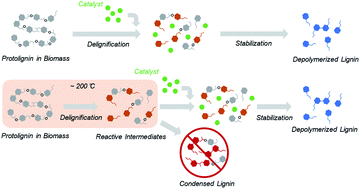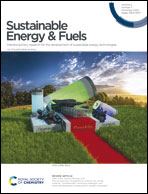Reductive catalytic fractionation of lignocellulose: when should the catalyst meet depolymerized lignin fragments?†
Abstract
Reductive catalytic fractionation (RCF) is a promising lignin-first biorefinery strategy that yields a deeply depolymerized lignin and nearly theoretical amounts of lignin monomers with reductive catalysts. Theoretically, the immediate stabilization with a catalyst is a key step in the RCF process, but the experimental support is lacking and few researchers have investigated the timeliness of stabilization. In this study, an on-line catalyst addition device was used to realize the flexible addition of a catalyst at different times in a high-pressure batch reactor. It was found that immediate stabilization is definitely indispensable for high lignin monomer yield, and the timeliness of stabilization mainly depends on the occurrence of repolymerization. Fast repolymerization occured at temperatures from 200 °C to 250 °C and more seriously around 250 °C, suggesting that the RCF process can be realized as long as adding the catalyst occurs before the temperature reaches 200 °C. Further this proves the feasibility of splitting delignification and stabilization/hydrogenation processes, and explains the reason for the reaction temperatures used in effective semi-continuous RCF processes at lower than 200 °C.



 Please wait while we load your content...
Please wait while we load your content...